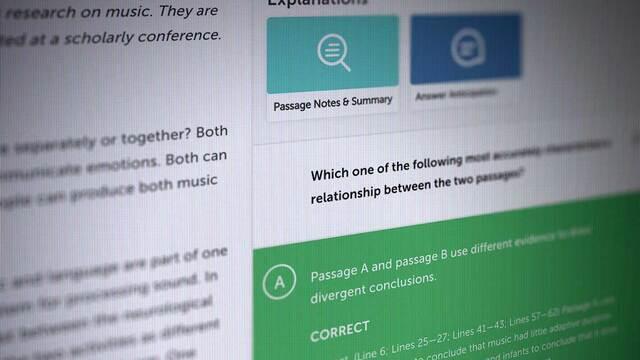Did you hear that? That was the sound of thousands of attorneys, law students, law school applicants, and — most urgently — law school administrators opening up the freshly christened 2024 U.S News & World Report Best Law Schools list.
Law school administrators spend a great deal of effort trying to make their law schools climb these rankings. Law students hope these rankings show that their institutions remain just as prestigious as they were when the students applied to them. And some attorneys might decide to throw a few shekels to their law school if these rankings reflect positively on their alma mater.
But what should you, someone applying to law school, take away from this list? Let’s go over four takeaway points from the USNWR Best Law School rankings:
1. These lists don’t change all that much from year to year
First, we should address that these rankings didn’t change much from last year. Here are the top 20 law schools this year and how much their ranking went up or down from the 2023-24 list:
| Ranking | Law School | Change Since Last Year |
| 1 | Stanford (tie) | - |
| 1 | Yale (tie) | - |
| 3 | Chicago | - |
| 4 | Duke (tie) | +1 |
| 4 | Harvard (tie) | +1 |
| 4 | Penn (tie) | - |
| 4 | Virginia (tie) | +4 |
| 8 | Columbia | - |
| 9 | NYU (tie) | -4 |
| 9 | Northwestern (tie) | +1 |
| 9 | Michigan (tie) | +1 |
| 12 | Berkeley | - |
| 13 | UCLA | - |
| 14 | Cornell (tie) | -1 |
| 14 | Georgetown (tie) | +1 |
| 16 | Minnesota (tie) | - |
| 16 | Texas (tie) | - |
| 16 | Washington St. Louis (tie) | +4 |
| 19 | Vanderbilt | -3 |
| 20 | Georgia (tie) | - |
| 20 | UNC (tie) | +2 |
| 20 | Notre Dame (tie) | +7 |
| 20 | USC (tie) | -4 |
The average change of position for these top-20 schools is only 1.48 positions. The only school on this list that changed its position dramatically is Notre Dame, jumping seven spots. (If we remove that outlier, the average change of position is only 1.23 positions.) The only schools that vaulted from outside the top 20 and into the top 20 are UNC and Notre Dame. And, somewhat improbably, no school that was inside the top 20 last year is outside the top 20 this year.
This is surprising, given that a bunch of schools made a big stink in 2022 about not sharing information with USNWR. USNWR responded by switching up how it weighed certain factors. But, the end results are generally similar year over year. Which, seen from USNWR’s perspective, makes sense. If these rankings changed dramatically year over year, the rankings would look even more random than they already are.
2. The methodology, while changing, is still imperfect
Yes, you read that last part correctly. We’re calling these rankings random. We’ll go as far as to call them arbitrary. They’re not quite capricious but certainly not impartial.
When you dig into the methodology used in the rankings, you’ll understand why. Fortunately, this methodology has changed for the better in recent years. Now, over half of a school’s ranking is based on the factors you probably care about, such as the likelihood you’ll get a legal job soon after graduating (33% of the ranking) and pass the bar on your first try (18% of the ranking).
Still, a quarter of a school’s ranking is based on “quality assessment.” To assess a school’s quality, USNWR asks about bunch of law school faculty members and administrators, lawyers, and judges to rate law schools on a 1-5 point scale. This is a major reason why the rankings stay so similar year over year.
As you can imagine, judges, lawyers, and even law professors aren’t paying super close attention to changes in most law schools’ facilities, admissions policies, and employment rates. So, to rank these institutions, they probably rely on what they’ve heard about the schools from publications like USNWR. So, if Yale was ranked number one last year, well — by golly — it must be a 5-star excellent law school!
This is an improvement over past USNWR methodology, when 40% of a school’s rank was based on this “quality assessment.” And we don’t mean to imply that this is irrelevant. Lawyers’ and judges’ perceptions of your law school will be very relevant when you’re applying for associate positions and clerkships. Still, this part of the methodology shows why USNWR rankings tend to reinforce what people already think about certain law schools.
And you know what is probably irrelevant to your law school experience? “Library resources,” which inexplicably still accounts for 2% of a school’s ranking. You’ll probably do all of your legal research on WestLaw or LexisNexis in law school, which is available at every school.
3. So, you shouldn’t base your application strategy on these rankings
Aside from the imperfect methodology, let’s just quickly address some of the absurdities of this list. You may have noticed that the “Top 20 Law Schools” actually includes 23 schools. Even the vaunted so-called “T14 Schools” include 15 schools. It’s as if the list is winking at us, subtly acknowledging that it’s a little silly to place so much weight on arbitrary groupings of these schools like “Top 20” or “T14.”
So, if you weren’t planning on applying to UNC but its inclusion in the Top 20 school list is making you rethink that decision, take a step back for a moment. Consider whether you’re putting too much emphasis on random, somewhat flawed rankings. Think about other factors that you might care about and research whether UNC has those characteristics.
4. Instead, do your own research
Rather than relying on an imperfect list, try doing your own research. Law School Transparency remains a solid resource, providing easy-to-parse information on school’s employment rates and tailoring recommendations of schools to your interests and application profile. Research important but underlooked stats like schools’ debt-to-income ratio. If you’re addicted to lists, at least look up even more “output-based” rankings, like Above the Law’s rankings. And, if you need a little extra help, you can always talk with a law school admissions expert to make a plan for next year’s application cycle.







